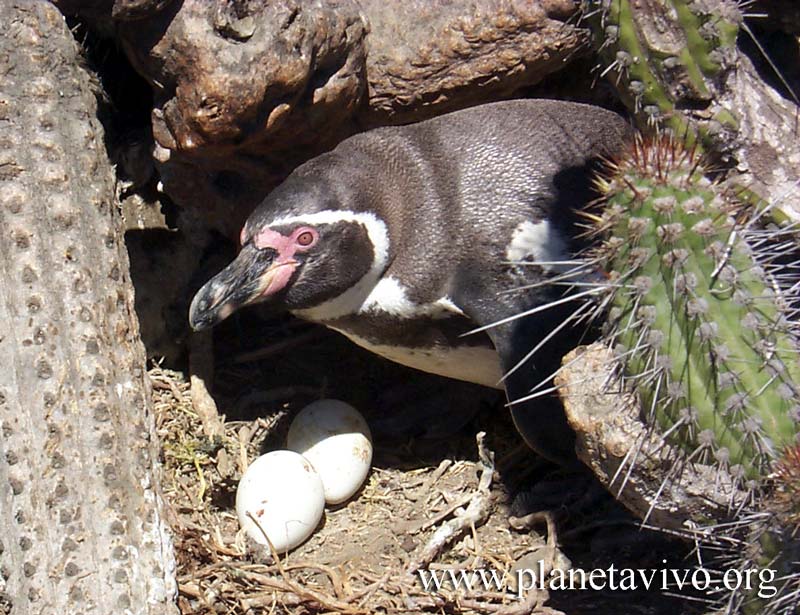Humboldt Penguin (Spheniscus humboldti) - Wiki Humboldt Penguin
From Wikipedia, the free encyclopedia
[Photo] Humboldt Penguin and Eggs. Photograph: Planeta Vivo Society www.planetavivo.org at Chanaral Island, Chile(User:carlosroCHILE)
The Humboldt Penguin (Spheniscus humboldti) is a South American penguin, breeding in coastal Peru and Chile. Its nearest relatives are the African Penguin, the Magellanic Penguin and the Gal??pagos Penguin. The penguin is named after Alexander von Humboldt, a naturalist and explorer who first described the animal to western observers.
Humboldt Penguins are medium-sized, black and white penguins, growing 65-70 cm tall. They have a black head with a white border running from behind the eye, around the black ear-coverts and chin, to join on the throat. They have blackish-grey upperparts and whitish underparts, with a black breast-band extending down the flanks to the thigh. They have a fleshy-pink base to the bill. Juveniles have dark heads and no breast-band.
This penguin nests on islands and rocky coasts, burrowing holes in guano and sometimes using scrapes or caves.
The current status of this penguin is vulnerable, due to a declining population caused in part by over-fishing. Historically it was the victim of guano over-exploitation. The current population is estimated at between 3,300 and 12,000.
http://en.wikipedia.org/wiki/Humboldt_Penguin
| The text in this page is based on the copyrighted Wikipedia article shown in above URL. It is used under the GNU Free Documentation License. You may redistribute it, verbatim or modified, providing that you comply with the terms of the GFDL. |
